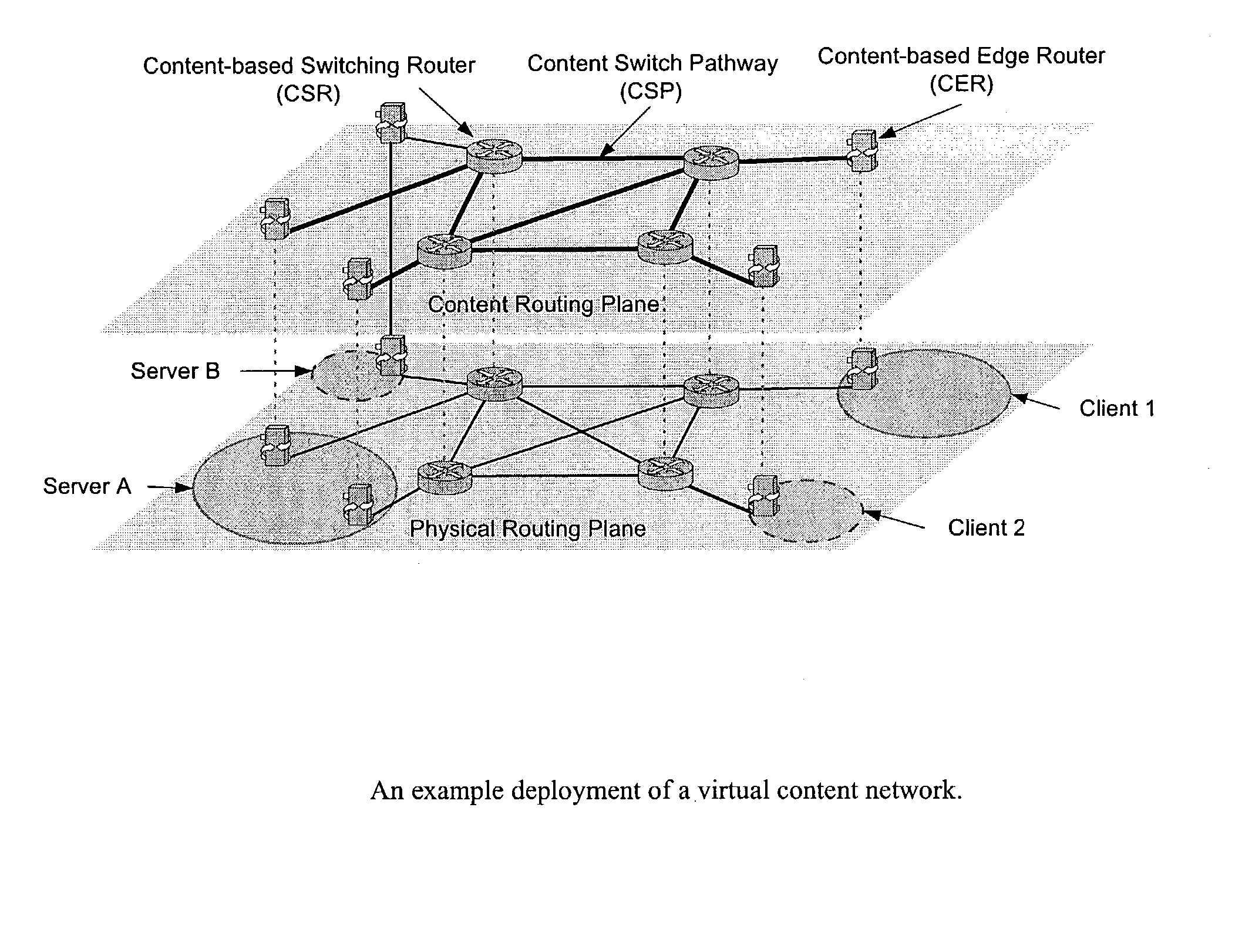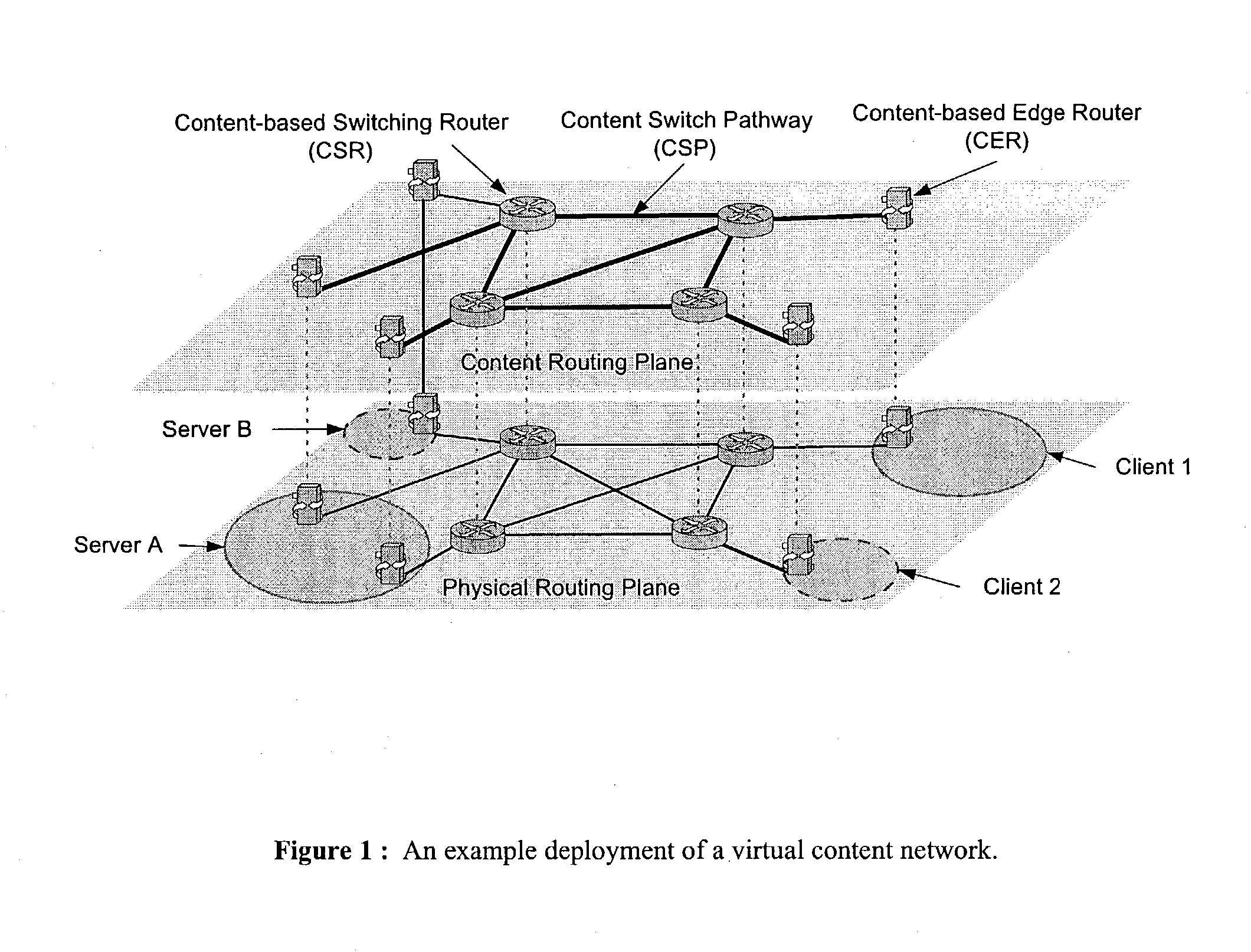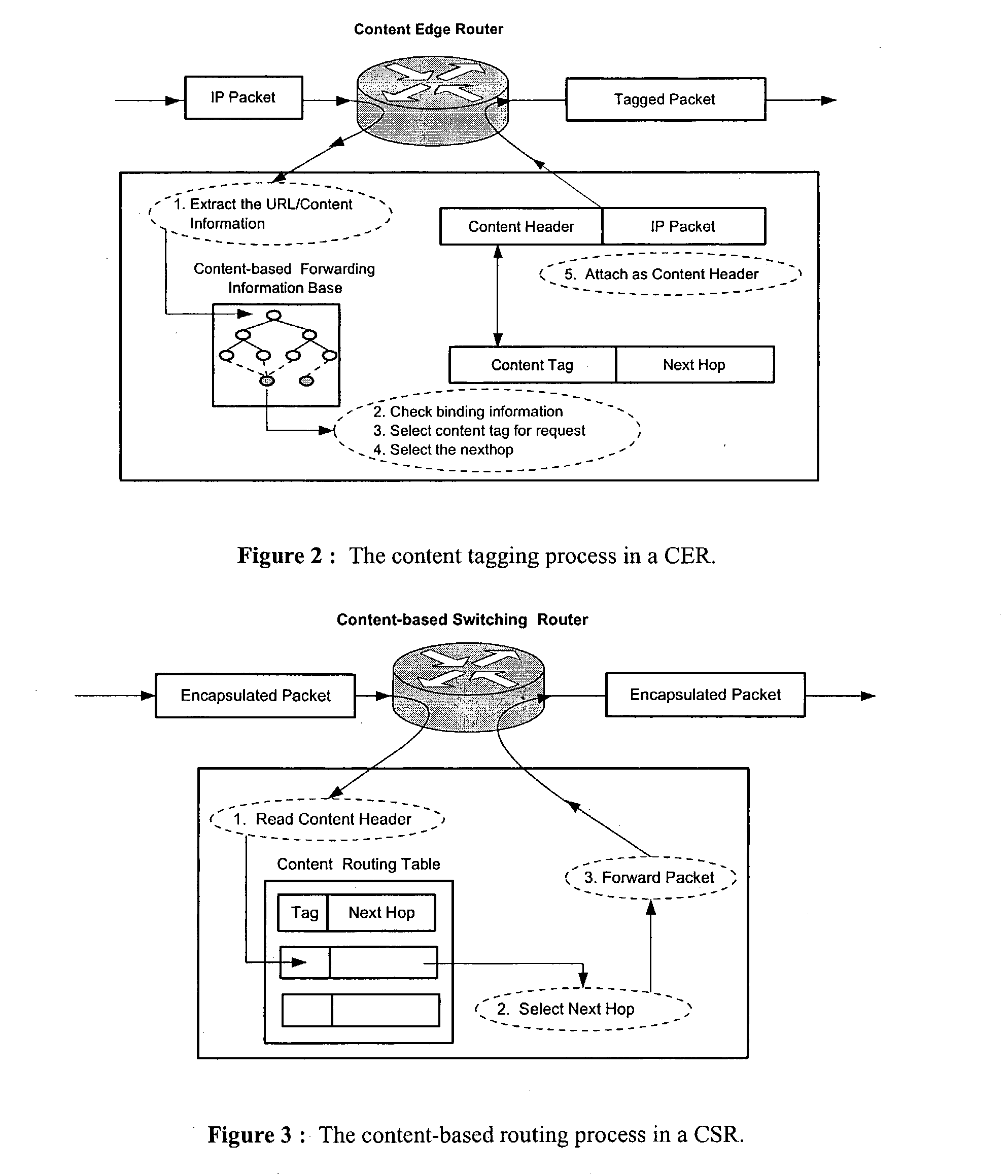Wide-area content-based routing architecture
a content-based routing and content-based technology, applied in the field of wide-area content-based routing architecture, can solve the problems of process overhead, inability to suitably handle the high volume of client requests, and existing routing architectures, etc., to achieve maximum connectivity, low transmission cost, and convenient management
- Summary
- Abstract
- Description
- Claims
- Application Information
AI Technical Summary
Benefits of technology
Problems solved by technology
Method used
Image
Examples
Embodiment Construction
[0063] This invention introduces a Protocol Independent Content Switching (PICS) architecture that is suitable for content aware networking in very-large scale geographically distributed networks. In the PICS architecture, several client and server sites are interconnected through a Virtual Content Network (VCN). The client sites contain the eventual consumers of the content that is managed by the VCN. The VCNs themselves can be networked to build larger networks. The client and server sites connect to the VCN using gateways that are content routers. Because the content is first examined by these routers, and they are at the edge of the VCN, we refer to these routers as the content edge routers (CERs). In our architecture, a client or server site can connect via multiple CERs to the VCN. Allowing multiple CERs per site precludes a single point of failure and provides an opportunity for enhanced load balancing among the content hosting servers. The CERs encapsulate the packets using ...
PUM
 Login to View More
Login to View More Abstract
Description
Claims
Application Information
 Login to View More
Login to View More - R&D
- Intellectual Property
- Life Sciences
- Materials
- Tech Scout
- Unparalleled Data Quality
- Higher Quality Content
- 60% Fewer Hallucinations
Browse by: Latest US Patents, China's latest patents, Technical Efficacy Thesaurus, Application Domain, Technology Topic, Popular Technical Reports.
© 2025 PatSnap. All rights reserved.Legal|Privacy policy|Modern Slavery Act Transparency Statement|Sitemap|About US| Contact US: help@patsnap.com



